 The Codebreaker's Secret by Sara Ackerman
The Codebreaker's Secret by Sara Ackerman Format: eARC
Source: supplied by publisher via Edelweiss
Formats available: hardcover, large print, paperback, ebook, audiobook
Genres: espionage, historical fiction, World War II
Pages: 384
Published by Mira Books on August 2, 2022
Purchasing Info: Author's Website, Publisher's Website, Amazon, Barnes & Noble, Kobo, Bookshop.org, Better World Books
Goodreads
A brilliant female codebreaker. An “unbreakable” Japanese naval code. A pilot on a top-secret mission that could change the course of WWII. The Codebreaker's Secret is a dazzling story of love and intrigue set during America’s darkest hour.
1943. As war in the Pacific rages on, Isabel Cooper and her codebreaker colleagues huddle in “the dungeon” at Station HYPO in Pearl Harbor, deciphering secrets plucked from the airwaves in a race to bring down the enemy. Isabel has only one wish: to avenge her brother’s death. But she soon finds life has other plans when she meets his best friend, a hotshot pilot with secrets of his own.
1965. Fledgling journalist Lu Freitas comes home to Hawai'i to cover the grand opening of the glamorous Mauna Kea Beach Hotel, Rockefeller's newest and grandest project. When a high-profile guest goes missing, Lu forms an unlikely alliance with an intimidating veteran photographer to unravel the mystery. The two make a shocking discovery that stirs up memories and uncovers an explosive secret from the war days. A secret that only a codebreaker can crack.
My Review:
 Like the author’s previous work, The Codebreaker’s Secret is primarily set in the author’s home state, Hawai’i, during World War II. And like her other books, this one mixes a touch of romance with a story about both brave and nefarious wartime deeds on a homefront that experienced the war just a bit differently – and considerably closer to home – than did the mainland.
Like the author’s previous work, The Codebreaker’s Secret is primarily set in the author’s home state, Hawai’i, during World War II. And like her other books, this one mixes a touch of romance with a story about both brave and nefarious wartime deeds on a homefront that experienced the war just a bit differently – and considerably closer to home – than did the mainland.
This one is also a bit different because it has a bit of a timeslip element to it. Not exactly, and not all that far apart in time, but just far enough for that wartime experience to seem both far away in the rearview mirror but still very much relevant – and impactful – on the characters’ present.
We begin in 1942, in Washington DC, with codebreaker Isabel Cooper desperate to get to Hawai’i. Her brother was an Army pilot, who was stationed at Pearl on that “Date which will live in infamy” when Japan bombed Pearl Harbor. Walt Cooper went down with his plane. He was his sisters’ big brother, protector and best friend, and her world seems empty without him to share it with.
She’s determined to go to Hawai’i, to meet Walt’s friends, to see what he saw and walk where he walked, so that she can feel closer to him – even though he’s gone. When she manages to break the code of Japan’s complex naval cipher machine, she’s on her way to Pearl, where her adventure truly begins.
In 1965, Luana (call her Lu, please!) Freitas is on her way back to her home in Hawai’i, but not for a visit to her family. She’s a features writer for Sunset Magazine and she’s come to cover the opening of Laurance Rockefeller’s brand new hotel, the Mauna Kea Beach Hotel, on the Kohala Coast of the island of Hawai’i. Sunset was, and is, a lifestyle magazine. Lu was supposed to write about the luxurious splendor of the hotel and the parties attended by the rich and famous.
But the first person Lu meets on the way to the hotel is the famous singer Joni Diaz. The second person is the legendary Life Magazine photographer Matteo Russi. When Joni goes missing, the writer and the photographer team up to learn what, and especially who, happened to the singer for her body to wash up on the hotel’s otherwise pristine beach.
What they discover is that the secrets and the enemies that have been hidden since the war still have the power to destroy. But that the wounds left behind by that war can still be healed, and that what was once lost can be found again. Even in the last place that anyone ever expected to look.
 Escape Rating A: This is my third book by Sara Ackerman (after Red Sky Over Hawaii and Radar Girls) and so far it’s my favorite. (I’m saying “so far” because there are two earlier books of hers that I have not yet read – and because of course I expect more!)
Escape Rating A: This is my third book by Sara Ackerman (after Red Sky Over Hawaii and Radar Girls) and so far it’s my favorite. (I’m saying “so far” because there are two earlier books of hers that I have not yet read – and because of course I expect more!)
A huge part of what made this work so well for me was the way that the “timeslip” worked. First we follow Isabel in 1943, then we are with Lu in 1965. There’s no need for any supernatural woo-woo or lost diaries to make the two stories link up, because Matteo Russi becomes a central figure in both time periods.
Which is entirely plausible and even realistic. Think about that whole meme on the interwebs about the foreshortening of time, that in our heads we think of 1980 as being twenty years ago when it’s really 40 years ago and what a mindbend that is.
But in 1965 the men and women who served in World War II (and survived) were mostly in their 40s, and often their early 40s at that. Very much in their primes, with most of their lives still ahead of them. A lot of TV heroes in the mid-1960s had served in either WW2 or Korea, which led to them being cops or private investigators or something else dangerous and sexy. Not that I was thinking that last bit when I watched those shows, I was only eight in 1965.
That Matteo is a young aviator in 1942 and an experienced photographer in 1965 at the top of his game grounds the story. As does Lu’s position of being a young female journalist who feels compelled to beat the men who are certain that she can’t cut it because she’s a woman.
There have been a lot of recent books about women serving as code breakers and other top secret positions during the war – a trend that this author has herself contributed to. This is also something that would have once been believed to be too sensational to be true, but with the war years now mostly declassified, those truths have come out and aren’t they glorious?
One of the things that made this work so much better for me than Red Sky Over Hawaii is that the villain of The Codebreaker’s Secret is entirely realistic and not over-the-top at all. There were plenty of Nazis who were brought to the U.S. after the war, with their records sanitized by the U.S. government, in order to advance the U.S. missile program and give us a leg up against the Soviets in the Cold War arms and space race.
That there were spies and agents working for the Nazi cause during the war is hardly a surprise. It’s been a topic for conspiracy theories and espionage thrillers for decades. And it allows for a disgustingly slimy, smarmy villain who is all-too-realistic and not over-the-top at all.
I’m always fascinated with the history in historical fiction, but what really makes this story sing – and even occasionally dance – are the personalities of its three protagonists, Isabel Cooper, Luana Freitas, and especially Matteo Russi who links the two – although not in the way that you’re probably thinking. And the story is infinitely better for that link not following the usual patterns.
Although their stories take place two decades apart, both Lu and Isabel are in the same place in each of theirs. Not just geographically, but also personally and professionally. They are both in their early 20s, both experiencing their first taste of freedom and responsibility, both driven to excel in professions that are dominated by men. And both willing to put themselves on the line for the truth.
At the same time, Matteo, who is the same human being in both time periods, is radically different. Time, experience and war have changed him from the brash young man who was Isabel’s friend but never her lover, to the womanizing bastard who is at the top of his profession but heading towards the bottom of his life.
He has no idea that mentoring Lu will heal so much of what has ailed him since the war. If only he can open himself up enough to try.
As I said earlier, I loved The Codebreaker’s Secret. I can’t wait for the author’s next book, because I’m highly anticipating more historical fictional goodness set in a captivating place and manages to provide a bit of a fresh perspective on a time period that has been endlessly explored – but not from this marvelous angle. Hopefully this time next year!


 The Wrong Victim (Quinn & Costa, #3) by
The Wrong Victim (Quinn & Costa, #3) by  The FBI sends Mathias Costa and his Mobile Response Team, including LAPD Detective Kara Quinn, seconded to the MRT at the end of the second book in the series,
The FBI sends Mathias Costa and his Mobile Response Team, including LAPD Detective Kara Quinn, seconded to the MRT at the end of the second book in the series, 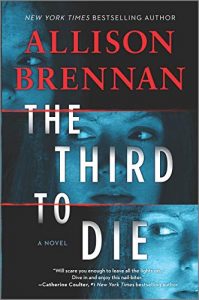 Escape Rating A+: I made a terrible mistake with this book. I started reading it when I went to bed, and absolutely could not put it down until I finished at 3:30 in the morning. I cursed my alarm when it woke me in the morning, but it was SO worth it. I needed a book to suck me into its pages, and The Wrong Victim did a fantastic job of taking me to the San Juan Islands and spinning me all around this compelling story.
Escape Rating A+: I made a terrible mistake with this book. I started reading it when I went to bed, and absolutely could not put it down until I finished at 3:30 in the morning. I cursed my alarm when it woke me in the morning, but it was SO worth it. I needed a book to suck me into its pages, and The Wrong Victim did a fantastic job of taking me to the San Juan Islands and spinning me all around this compelling story.
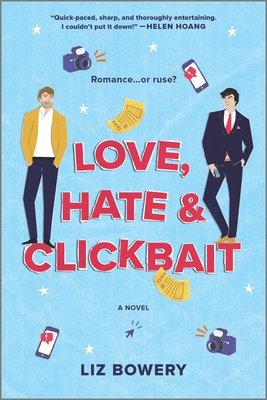 Love, Hate & Clickbait by
Love, Hate & Clickbait by 
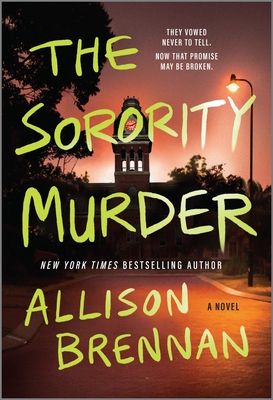 The Sorority Murder by
The Sorority Murder by 
 Red Sky Over Hawaii by
Red Sky Over Hawaii by  Sisters by Choice (Blackberry Island, #4) by
Sisters by Choice (Blackberry Island, #4) by 

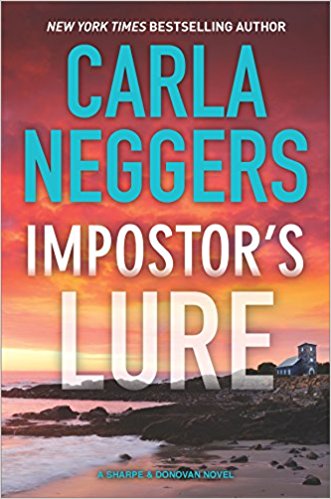 Impostor's Lure (Sharpe & Donovan #8) by
Impostor's Lure (Sharpe & Donovan #8) by 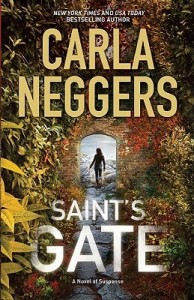 Impostor’s Lure takes place a year (and 7 books) after that first meeting in
Impostor’s Lure takes place a year (and 7 books) after that first meeting in  This is definitely not the place to start this series. While, as with all the books in the series, the mystery is solved within this volume, an awful lot of the background revolves around the circle of friends and family that Emma and Colin are very much in the middle of. By the time this story ends, pretty much every one of their friends and most of their family have at least had a walk on part in the solution – and there’s a piece of that solution that only has resonance if you’ve at least read some of the previous books. I don’t think you need to have read them all to enjoy Impostor’s Lure, but at least the first one and one from the middle.
This is definitely not the place to start this series. While, as with all the books in the series, the mystery is solved within this volume, an awful lot of the background revolves around the circle of friends and family that Emma and Colin are very much in the middle of. By the time this story ends, pretty much every one of their friends and most of their family have at least had a walk on part in the solution – and there’s a piece of that solution that only has resonance if you’ve at least read some of the previous books. I don’t think you need to have read them all to enjoy Impostor’s Lure, but at least the first one and one from the middle. 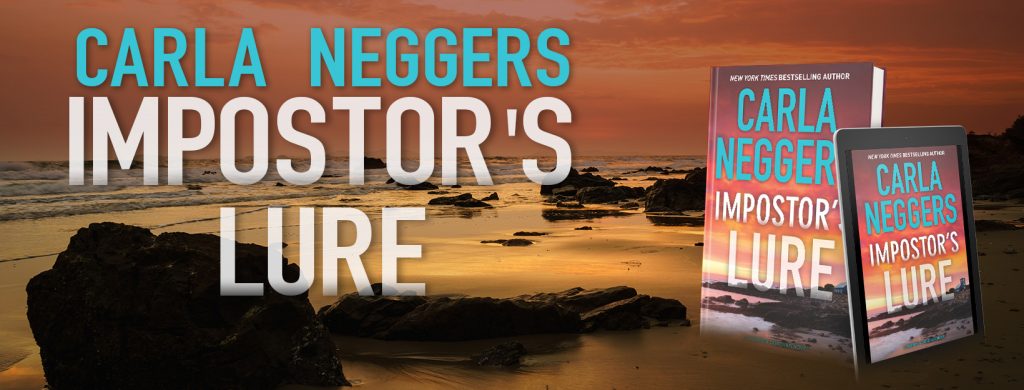

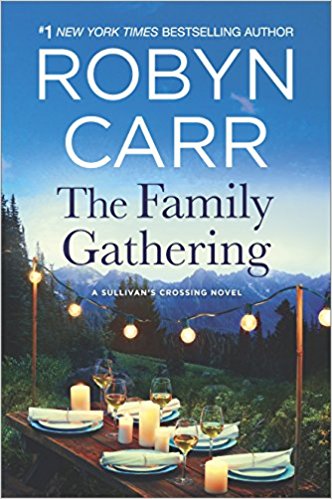 The Family Gathering (Sullivan's Crossing, #3) by
The Family Gathering (Sullivan's Crossing, #3) by  The main story of this book focuses on Dakota Jones, just as the previous books in the series have focused first on his older brother Cal (
The main story of this book focuses on Dakota Jones, just as the previous books in the series have focused first on his older brother Cal (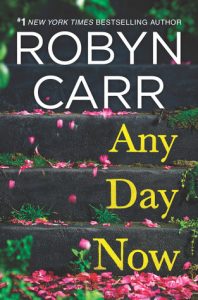 The other issue holding this book together, is the stalking of Dakota. Not that Dakota is stalking anyone, but that he is being stalked by a woman who entered the series in
The other issue holding this book together, is the stalking of Dakota. Not that Dakota is stalking anyone, but that he is being stalked by a woman who entered the series in The River House by
The River House by  Because they were besties for over two decades, they have a lot of backstory together. And Gabe’s return to Knights Bridge brings up all the events since he left. That means there’s a lot of the past that gets uncovered and turned over. While longtime readers of the series may find the backstory repetitive, for those of us who have read few (
Because they were besties for over two decades, they have a lot of backstory together. And Gabe’s return to Knights Bridge brings up all the events since he left. That means there’s a lot of the past that gets uncovered and turned over. While longtime readers of the series may find the backstory repetitive, for those of us who have read few (
 A Dangerous Game (New York Confidential #3) by
A Dangerous Game (New York Confidential #3) by  A Dangerous Game is romantic suspense of the “established couples” variety of romantic suspense. FBI Special Agent Craig Frasier and therapist/pub owner Kieran Finnegan met and fell in love in the first book in the series,
A Dangerous Game is romantic suspense of the “established couples” variety of romantic suspense. FBI Special Agent Craig Frasier and therapist/pub owner Kieran Finnegan met and fell in love in the first book in the series, 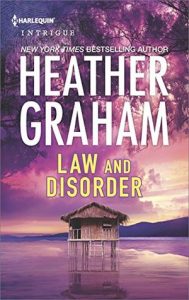 Escape Rating B: I have not read the previous books in this series, but I did read
Escape Rating B: I have not read the previous books in this series, but I did read